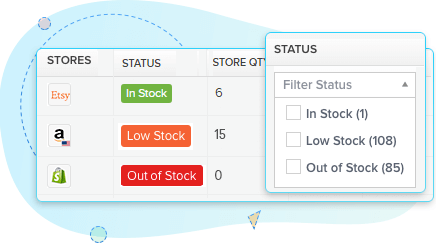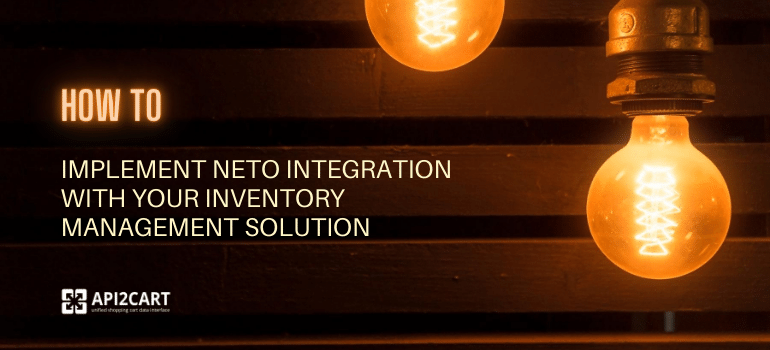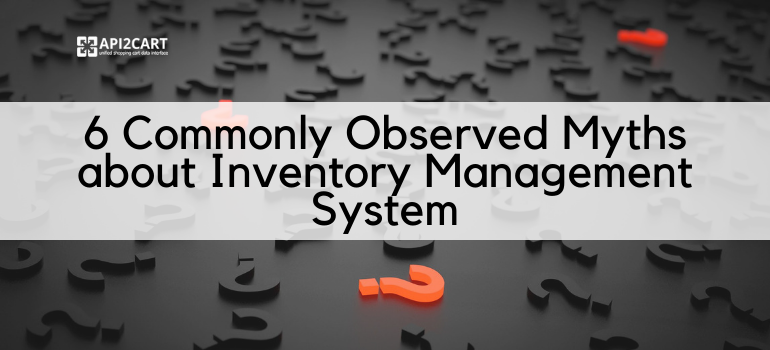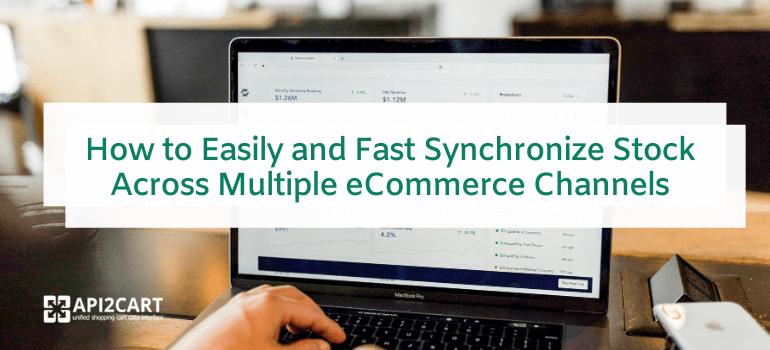
Ecommerce is all about selling products online and at the same time maintaining variety in every aspect of a product. It is a diverse platform where every product has its own properties viz, size, color, price, etc. Everything needs to be recorded for customer preferences.
For online store owners, whether large or small, it is impossible to manage all this information and stock status in an inventory manually. Further, if an item is out of stock, it needs to be added in time so that the customers do not switch to another site.
But how is that possible without the manager been informed about the stock status? Here is where inventory synchronization between all online stores holds significance. It is responsible for maintaining an optimal amount of resources in all the stores.
In this article, you will discover a simple way for different B2B SaaS systems to synchronize stock across multiple eCommerce channels.
How the Process of Inventory Synchronization Looks Like in Different Software Providers?
Inventory Management Software
These systems are capable of keeping track of items being sold out in the inventory across all online stores. Any retailer would get a benefit from an inventory management system. The former would not have to bother if an item is sold out on one online store and is still available on others. This information is a part of the inventory synchronization process itself.
ERP Inventory Synchronization
ERP solutions also allow merchants to automatically synchronize stock levels and keep inventory accurate and up-to-date on multiple channels. When a customer purchases an item, such a system instantly changes the inventory count. With automated inventory updates, online store owners can minimize back orders, prevent customer disappointment, and build trust and confidence with their clients.
Warehouse Management Systems
One of the greatest features of WMS is the ability to monitor and control inventory across several channels. Any update in the actual inventory quantities is automatically displayed on all sales channels. Warehouse management software is quite similar to the inventory management system though it has some more perks.
Dropshipping automation software
Online store owners build their stores on different eCommerce platforms and usually distribute products on Amazon or eBay. Moreover, they collaborate with diverse suppliers. In that case, dropshipping software comes in handy, which solves a lot of issues associated with dropshipping, including synchronization of inventory.
Such type of software automatically keeps inventory levels in sync with suppliers and e-commerce stores or platforms. Automation also removes the possibility of any human errors.
Multi-channel software
One more system that provides store owners with an inventory synchronization feature is multi-channel software. It enables merchants to adjust stock and keep it automatically updated, preventing out of stock and overselling situations.
What is the inventory synchronization workflow?
Usually, B2B SaaS solutions perform inventory synchronization every few minutes or sometimes in real-time. Here is how the process of stock sync works:
- Retailers manually enter the quantity of items and link everything to the listings across all their platforms.
- Customers place orders on one of the channels online store owners are selling on, like Shopify or eBay.
- The orders are 'imported' to the B2B SaaS system, which automatically adjusts inventory.
- Once the system recalculates inventory, and it automatically updates the information on all linked listings.
With the help of such B2B SaaS solutions, retailers can monitor regular sales and be aware of what items are needed to refill the stock
To sync inventory across multiple sales channels such types of systems need to be integrated with eCommerce platforms.
However, integrating with every eCommerce platform manually is difficult. What's more when multiple platforms are under consideration, it turns out to be quite challenging. Every integration is a complicated process and requires an expert for flawless accomplishment. Moreover, it is time-consuming and expensive too.
eCommerce Integration Difficulties
When B2B SaaS companies choose to integrate with eCommerce platforms individually, they will face the following challenges:
- Complex process. Each shopping cart has its own specific architecture and logic, which requires time and skill to learn.
- The need for a qualified expert. In the case of B2B applications for eCommerce, many users rely on integration. Poorly developed API can lead to considerable customer problems and losses.
- Integrations require time. It takes at least a month to develop one integration. Every integration, as we said above, is unique. So you can multiply this time by the number of platforms you want to integrate with.
- Integrations are costly. Each integration costs at least a few thousand dollars.
- Further integration maintenance. When you finish the integration, it is not the end of the story. It needs further upgrades and maintenance. Again it will take time and resources due to the need for IT staff to support the integration.
How to easily sync inventory across multiple sales channels?
- Register API2Cart account.
- Add your store.
- When an order is placed on the store you get notified about the order via webhook for order.add event or retrieve new orders via order.list method.
- Update stock quantities on all sales channels via product.update method using increase_quantity and descrease_quantity parameters.
Instead of integrating with each e-commerce platform separately, a better solution is to use a unified API. For example, API2Cart provides integration with 40+ shopping carts and marketplaces at once. The service offers the whole scope of functionality that allows you to provide an inventory synchronization feature for online store owners. Moreover, you will be able to get, add, update, delete information on orders, products, customers, shipments, categories, etc.
If you need more information on how our service works, contact us or schedule a call with our expert. Or better yet, make a trial account to see how API2Cart fits your business.
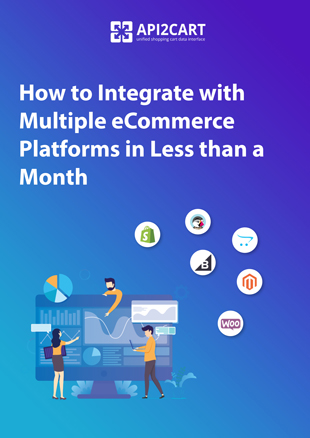
Wait!
Before you go, download the guide on how to integrate with 40+ eCommerce platforms in less than a month!
